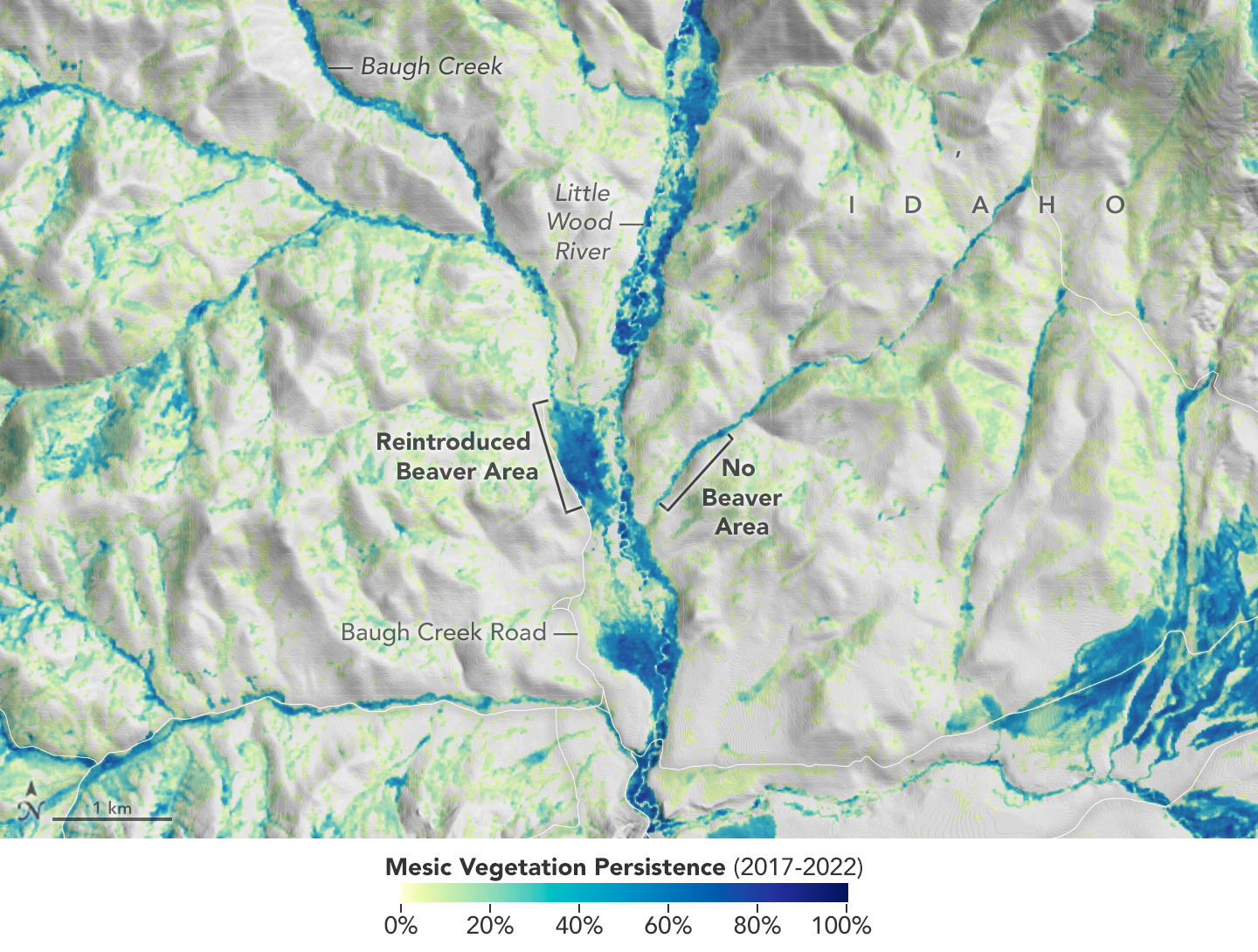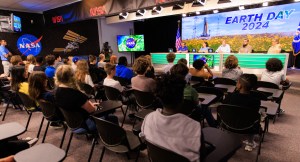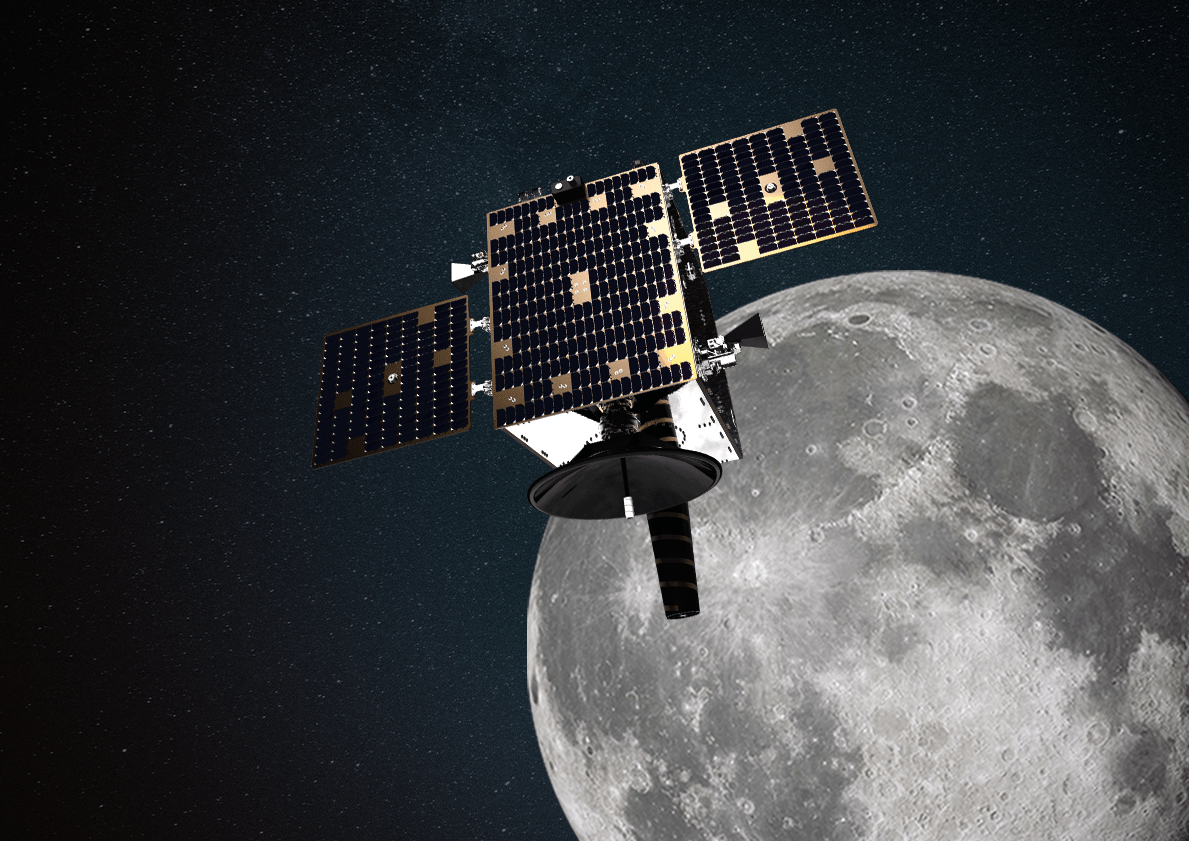NASA
Registered
2 min read

A beaver family nibbles on aspen branches just up Logan Canyon from Utah State University, in Spawn Creek, Utah.
Credit: Sarah Koenigsberg
Humans aren’t the only mammals working to mitigate the effects of climate change in the Western United States. People there are also enlisting the aid of nature’s most prolific engineers – beavers. Using NASA-provided grants, two open-source programs from Boise State University in Idaho and Utah State University in Logan are making it possible for ranchers, land trust managers, nonprofits, and others to attract beavers to areas that need their help.
The Beaver Restoration Assessment Tool (BRAT) created by Utah State University uses data from satellites built at NASA’s Goddard Space Flight Center in Greenbelt, Maryland, to identify areas that need restoration and would benefit from beavers’ dam-building abilities. The Boise State University Mesic Resource Restoration Monitoring Aid (MRRMaid) program, which also uses satellite data, monitors the areas over time. Both efforts are also supported by NASA’s Research Opportunities in Space and Earth Science program and the agency’s Applied Sciences’ Ecological Conservation program.
Once a site is chosen, program staffers and landowners begin to take measures to attract beavers, or the teams may relocate them from other areas. Either way, once on site, these semiaquatic builders get to work building and maintaining dams to create the ponds. The ponds help to retain water, including runoff from snowmelt and rainstorms, that would otherwise rush through the area, causing erosion and degrading the surrounding ecosystems.
Over time, these new ponds raise the water table, support wetlands that attract more wildlife and fish, and restore native plants to the ecosystem. Beaver dams can help ranchers improve water availability on their property, supporting their operations.

NASA Landsat data helps Utah State University identify streams where beavers can be reintroduced to help improve an ecosystem. Boise State University also uses Landsat data to show just how much beavers help. The vegetation in this satellite image indicates where streams or creeks are flowing and reveals the benefits of beaver activity.
Credit: NASA
In addition to being beautiful and supporting the local ecology, these moisture-rich environments can limit wildfire damage with a barrier of healthy vegetation resistant to burning. When human infrastructure is nearby, a built-in leak or other interventions by humans can be added to control the water level, preventing floods that cause property damage.
As a restoration site’s health improves, MRRMaid and BRAT use NASA satellite data to monitor those changes and analyze how the beavers benefit the ecosystem in drought-stricken areas. Community leaders can use this information and the living examples of restored sites to build new parks and recreational areas and plan future restoration projects with their furry collaborators.
Read More
For more information on beaver rewilding, visit:
https://www.nasa.gov/missions/lands...ers-after-measuring-the-impacts-of-rewilding/
Apr 19, 2024

6 min read
NASA has selected six new airborne missions that include domestic and international studies of fire-induced…
Article 5 hours ago

2 min read
This image from the NASA/ESA Hubble Space Telescope features NGC 3783, a bright barred spiral galaxy about…
Article 5 hours ago

4 min read
Article 6 hours ago
Keep Exploring
Earth Observations

Earth Day News and Articles

Climate Change

Solar System

Continue reading...
Preparations for Next Moonwalk Simulations Underway (and Underwater)

A beaver family nibbles on aspen branches just up Logan Canyon from Utah State University, in Spawn Creek, Utah.
Credit: Sarah Koenigsberg
Humans aren’t the only mammals working to mitigate the effects of climate change in the Western United States. People there are also enlisting the aid of nature’s most prolific engineers – beavers. Using NASA-provided grants, two open-source programs from Boise State University in Idaho and Utah State University in Logan are making it possible for ranchers, land trust managers, nonprofits, and others to attract beavers to areas that need their help.
The Beaver Restoration Assessment Tool (BRAT) created by Utah State University uses data from satellites built at NASA’s Goddard Space Flight Center in Greenbelt, Maryland, to identify areas that need restoration and would benefit from beavers’ dam-building abilities. The Boise State University Mesic Resource Restoration Monitoring Aid (MRRMaid) program, which also uses satellite data, monitors the areas over time. Both efforts are also supported by NASA’s Research Opportunities in Space and Earth Science program and the agency’s Applied Sciences’ Ecological Conservation program.
Once a site is chosen, program staffers and landowners begin to take measures to attract beavers, or the teams may relocate them from other areas. Either way, once on site, these semiaquatic builders get to work building and maintaining dams to create the ponds. The ponds help to retain water, including runoff from snowmelt and rainstorms, that would otherwise rush through the area, causing erosion and degrading the surrounding ecosystems.
Over time, these new ponds raise the water table, support wetlands that attract more wildlife and fish, and restore native plants to the ecosystem. Beaver dams can help ranchers improve water availability on their property, supporting their operations.

NASA Landsat data helps Utah State University identify streams where beavers can be reintroduced to help improve an ecosystem. Boise State University also uses Landsat data to show just how much beavers help. The vegetation in this satellite image indicates where streams or creeks are flowing and reveals the benefits of beaver activity.
Credit: NASA
In addition to being beautiful and supporting the local ecology, these moisture-rich environments can limit wildfire damage with a barrier of healthy vegetation resistant to burning. When human infrastructure is nearby, a built-in leak or other interventions by humans can be added to control the water level, preventing floods that cause property damage.
As a restoration site’s health improves, MRRMaid and BRAT use NASA satellite data to monitor those changes and analyze how the beavers benefit the ecosystem in drought-stricken areas. Community leaders can use this information and the living examples of restored sites to build new parks and recreational areas and plan future restoration projects with their furry collaborators.
Read More
For more information on beaver rewilding, visit:
https://www.nasa.gov/missions/lands...ers-after-measuring-the-impacts-of-rewilding/
Share
Details
Last UpdatedApr 19, 2024
Related Terms
- Technology Transfer & Spinoffs
- Climate Change
- Earth
- Goddard Space Flight Center
- Spinoffs
- Technology Transfer
Explore More

6 min read
NASA Selects New Aircraft-Driven Studies of Earth and Climate Change
NASA has selected six new airborne missions that include domestic and international studies of fire-induced…
Article 5 hours ago

2 min read
Hubble Captures a Bright Galactic and Stellar Duo
This image from the NASA/ESA Hubble Space Telescope features NGC 3783, a bright barred spiral galaxy about…
Article 5 hours ago

4 min read
Students Celebrate Rockets, Environment at NASA’s Kennedy Space Center
Article 6 hours ago
Keep Exploring
Discover Related Topics
Earth Observations

Earth Day News and Articles

Climate Change

Solar System

Continue reading...







